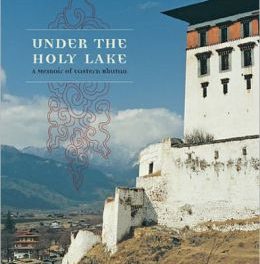Author: Suzanne Collins
Publisher: Scholastic Press – 374 pages
Book Review by: Paiso Jamakar
As of today, February 19, 2012, The Hunger Games ranks No.10 on the Amazon Top 100 Bestsellers list. It has been on this list for 509 days, which is about 17 months, or one year and nearly five months. It was first published as a hardcover book in September 2008. This is a novel written for young adults, typically aged between 14 and 22.
This book is the first of the Hunger Games Trilogy of bestselling novels by Suzanne Collins. The other two works are Catching Fire, the second book, and Mocking Jay, the third novel in the series.
Catching Fire is currently No.14 on that bestseller list, and has been on it for 596 days, which amounts to nearly 20 months or a year and nearly eight months. It was released a year later, in September 2009, after the first novel.
Meanwhile the third and final book Mocking Jay is currently No.7 on the aforementioned Amazon list of bestselling books and has been on it for 611 days, slightly longer than the second novel. It was first released in August 2010.
That these novels have been among the top 15 books in the United States for over a year and a half speaks for their immense popularity and broad appeal.
Stephen King, one of America’s most prolific storytellers who has written 49 works of fiction as of 2011 that have sold more than 350 million copies, has given a positive review of this novel. No testimonial is more powerful to a writer than getting words of praise from another one who looms so large in the literary world.
The Hunger Games in essence is set in the future in a country called Panem, which is a dystopic version of current-day North America controlled by panel of people in its capital named Capitol which exercises power over the 12 districts of this futuristic entity.
A dystopia is sort of a utopia gone badly wrong, a nightmare instead of an intended sweet dream. Accordingly, in Capitol resides a group of authoritarian people constituting a coercive and repressive government that exercises tremendous social control over the inhabitants of Panem.
Dystopian societies – such as those created in other novels like Brave New World and Nineteen Eighty-Four – are police states that have unlimited power over its citizens, as described in Wikipedia.
Every year, 24 people (a male-female pair from each of 12 districts who are required to be between 12 and 18 years old) are selected by a lottery to participate in the Hunger Games, in which 22 people lose their lives and only twp people survive. This annual event is a form of punishment for a rebellion that occurred a long time ago. The survivor receives a ration of grains and oil from the Capitol. These games are televised nationwide and all inhabitants are required to watch them.
In the book, which features the 74th instance of such games, the heroine Katnis Everdeen, volunteers for her younger sister Primrose and takes her part. Also selected from District 12 is Peeta Mellark, a baker’s son who once gave bread to Katnis when her family was starving. Readers would expect that the heroine would win and that is what happens.
This book has as its theme the struggle for self-preservation that the population of Panem faces in the midst of domination by the repressive body of rulers in Capitol.
Participation of one pair of youngsters in each district in the games is mandatory. So is watching them on TV nationwide. Authoritarian rulers and regimes use mass media to exert control. Required watching is part of that process of control and repression.
The starvation and the need for resources that the citizens encounter in and outside of the arena project helplessness, which reinforces authoritarianism. The game participants try to overcome that helplessness in their fight for survival.
Katniss is expert in the use of the bow and arrow. She uses them to hunt for food that she provides to her family. Such frequent hunting helps her develop skills that made her win in the Games.
Katniss and Peeta’s decisions to kill the game participants in order to survive (kill or be killed) represents an abhorrent moral choice. But in the face of no other choices available to them or to any of the participants, the citizens are given a clear message as to who are in control of their lives.






